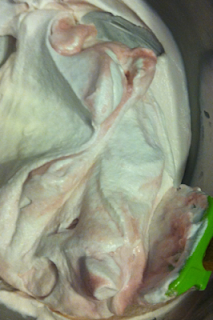Unless you are Steven Raichlen of Primal Grill©, or are a line cook at a steak house, you have probably felt a little intimidated when it comes time to cook steak. I used to be quite intimidated myself, there seemed to be so much guesswork involved. How are you supposed to know when its done? What temperature is safe? What is the correct way to cut it? When to do you cut it? There seemed to be more questions then answers. Attending culinary school and working at the local cooking school has given me insight and practice into how to properly prepare steak. And I will share what I have learned with you.
Cooking Steak
It is important to let your steak come to room temperature before you cook it. This allows the meat to cook evenly and give a better browning or sear. If it is not room temperature, some possible results may include: cold center, tough outer edge and no browning. Just take out the meat about 20 minutes before cooking it and longer if it is a larger cut.
Depending on how rare or well done you want your steak changes the cooking time. A recipe may tell you to cook a number of minutes per side, but the truth is that every piece of meat is different and each will have a different cooking time. So time is not a reliable indication of how well done your meat is.
Temperature is the single most important factor used to determine how well done your steak will turn out. Table 1 below show the desired finish and the associated temperatures. The reason you cook it to the temperatures listed is that once you remove the meat from the heat source, its internal temperature will continue to rise an additional 5-10 degrees depending on the size of your cut. This is called
carry over cooking. Carry over cooking happens because there is so much contained energy stored in the piece of meat. After it has been removed from the heat source, heat will continue to be released resulting in additional cooking. This happens with all types of meats and cuts. The bigger the cut, the more carry over cooking will occur.
Table 1: Finish Temperatures
| Desired Finish |
Internal Temp |
Final Temp |
| Rare |
115-120 °F |
120-125 °F |
| Medium Rare |
125-130 °F |
130-135 °F |
| Medium |
130-135 °F |
135-140 °F |
| Medium Well |
140-145 °F |
145-150 °F |
| Well |
150-155 °F |
155-160 °F |
Once removed from the heat, it is important to let your steak rest before cutting. This allows all the juices to redistribute throughout your steak. If you cut directly into to the steak without a rest period, all the juices will run out, leaving you with a dry, tasteless piece of meat. No one wants to ruin an expensive cut of meat, so wait at least 10 minutes. Again, if the cut is bigger you may want to wait 20-30 minutes. It is well worth it.
Another trick to help determine if your steak is cooked to the desired finish is to use a trick with your hand. Using the inside palm of your hand beneath the thumb, outlined in red below, the firmness at that point is roughly equivalent to your steak desired finish. As you touch your thumb to different fingers the firmness changes. The images below depict the hand position given a specific finish.




 |
| Position 1: Rare, 2: Medium Rare, 3: Medium, 4: Medium Well, 5: Well |
Cutting Steak
Now that you know how to properly cook and rest your steak. The next important tip to remember is how to properly cut your steak. With any steak you want to cut slices against the grain. This creates a tender slice of meat. If you cut with the grain, it will be very chewy and possibly less enjoyable. By cutting against the grain, the meat remains much softer and will give easier when you chew it. Much like the grain in a piece of wood, pay attention to the direction of the meat fibers.
 |
| Depiction of grain (red) and cutting direction (green) |
Food Safety
The final topic I will cover is how to safely handle raw meat. When handling any cut of raw meat it is important to avoid cross contamination.
Cross contamination occurs when the raw meat juices or bacteria attach to other items that are not being cooked or cooked to a lesser temperature. This has the potential to cause health problems. So whatever touches a raw piece of meat, make sure to thoroughly wash, or switch to clean, utensils, cutting board, or plate before touching the cooked meat again. It is very important to be safe, no one wants to get sick from their food. You can never be to careful. Safety first!



























